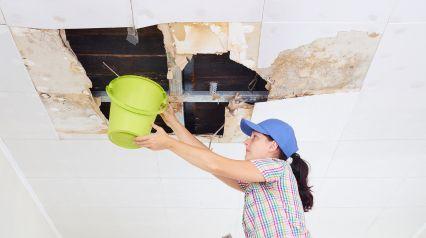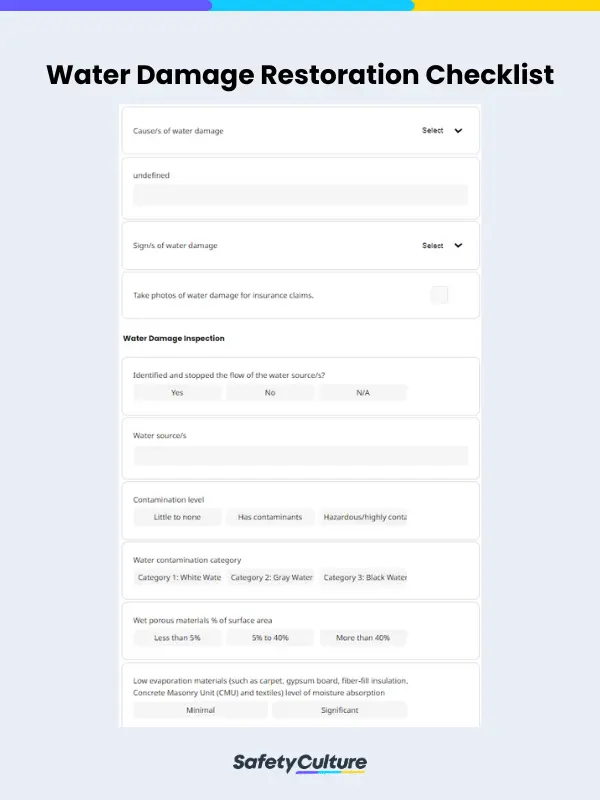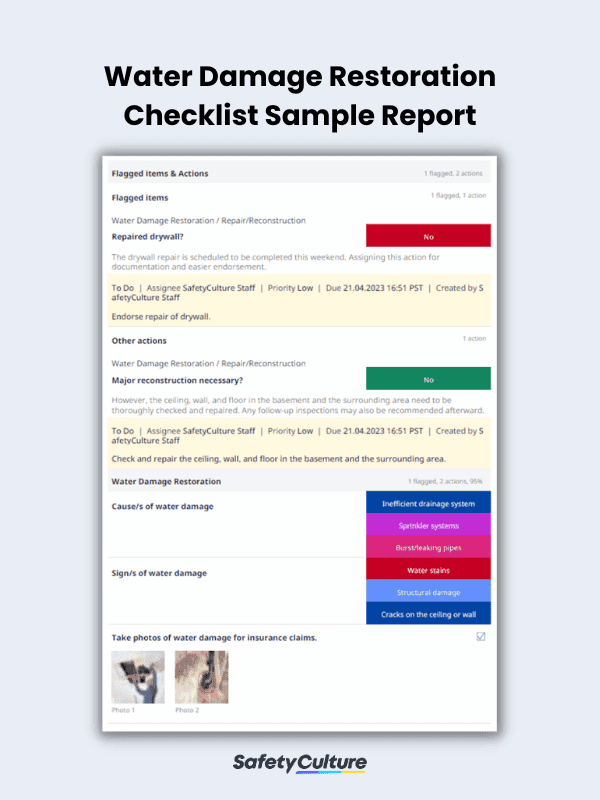What is a Water Damage Restoration Checklist?
A water damage restoration checklist is a tool used to list the steps, procedures, and actions that should be followed and taken during the restoration process after water damage occurs on a specific property. It’s used by restoration professionals, construction workers, and even homeowners or property owners to help address issues and prevent further damage from happening.
Why Use a Water Damage Restoration Checklist
Since water intrusion in properties can sometimes be inevitable, the damage thereafter can be unpredictable and must be thoroughly investigated through a water damage inspection or water damage assessment. In some cases, major repairs, replacements, and other tasks must be done so that the property can regain its value or condition before water intrusion. This is where water damage restoration process comes in.
In this process, using a water damage restoration checklist is important because it helps ensure that the restoration process is carried out systematically and thoroughly. Also, this can help minimize further damage and ensure the safety of those who’ll work with the restoration.
To help you get a grasp of the top benefits of using this checklist, here’s a list of what you can achieve:
- Comprehensive Restoration
- Time Efficiency
- Safety
- Industry and Regulatory Compliance
What to Include in the Checklist
A water damage restoration checklist should at least include the following components and sections to ensure a comprehensive restoration process:
- Title page where you can record the date and time, location, and other details about the site being assessed for water damage restoration
- Source or cause, signs, and extent of the water damage
- Option to include photos of the water damage
- In-depth checks and inspections on the contamination level, category, and class of the water damage
- Water removal using specialized equipment, such as pumps, vacuums, and dehumidifiers
- Drying of the affected area, including the use of air movers, dehumidifiers, and other equipment
- Cleaning the area to remove any debris, mold, or bacteria that may have developed as a result of the water damage
- Checking of correct and ample PPEs and cleaning materials
- Restoration of the property to its pre-damaged condition, including repairing or replacing damaged materials, such as drywall, flooring, or furniture
- Completion page where the inspector or person who prepared the report can include a signature along with a summary of the required actions or next steps and follow-up inspections
How to Use a Water Damage Restoration Checklist
Using a water damage restoration checklist can help ensure that the restoration process is completed thoroughly and efficiently. Here are some tips on how to use a water damage restoration checklist:
- Assess the water damage by identifying the affected areas.
- Use the checklist as a guide to complete each step of the restoration process. Make sure that you check off each step as you complete it.
- If you encounter any issues or unexpected problems during the restoration process, note them on the checklist. This can help you identify any areas that may need additional attention, immediate action, or follow-ups.
- After the restoration process is complete, you may recommend doing a follow-up inspection and assigning corrective actions as necessary.
FAQs About Water Damage Restoration Checklists
Anyone responsible for restoring a specific area after being damaged by flood, malfunctioning systems, and other incidents should use a water damage restoration checklist. Typically, though, this checklist can be used by homeowners, property managers, and restoration professionals in construction projects, to name a few.
If the water damage is extensive or there are major safety concerns, it’s recommended to consult with professional restoration companies. They can provide guidance on the restoration process and ensure that it’s carried out safely and efficiently before using a water damage restoration checklist.
Yes, this checklist can be customized to fit the specific needs of the restoration project. Depending on the extent of the damage, the type of materials affected, and the kind of work needing to be done, certain steps may need to be added or removed from the checklist.




